By Hazem Jamjoum
From the first commercial audio recordings at the turn of the 20th century to the 1940s, a dozen or so record companies made tens of thousands of audio recordings for sale across the globe to the peoples and diasporas of the southern and eastern Mediterranean regions.* The vast majority of these recordings were of music, but they also included recordings of comedy sketches, political speeches, Qur’anic recitations, and a smattering of other audio forms. Recording companies sought to capitalise on the region’s communal diversity by recording materials in Arabic, Turkish, Hebrew, Greek, Armenian and other local languages; especially after realising that there was a market for these materials in diaspora communities from the region, particularly in the Americas. Beyond commercial recordings, the region’s audio heritage includes a large volume of one-of-a-kind recordings, such as radio transcriptions prepared for broadcasts, ethnographic recordings, home recordings by amateurs, and so on.
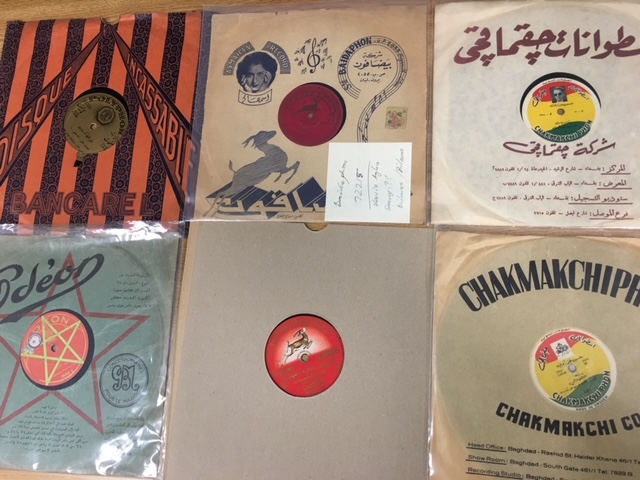
Over a century later, several archives with varying breadths to their collection mandates have identified these recordings as priority areas for collection, preservation, exhibition and digital curation. In this piece, I aim to provide information that could be useful to researchers of the southern and eastern Mediterranean regions who are interested in such things as recording history, cultural heritage, music, and archival practices and provenance. I profile five institutions with some of the most substantial collections of relevance to the history of audio recording in the region: the AMAR Foundation (Lebanon), The Palestinian Institute for Cultural Development-Nawa (Palestine), Centre des Musiques Arabes et Méditerranéennes: Tunisian National Sound Archive (Tunisia), the British Library (UK) and the University of California at Santa Barbara Library (USA).
AMAR, Foundation for Music Archiving and Research
Abdelaziz al-Annani (1925-2000) was an Egyptian record collector who inherited the passion, and the beginnings of his collection, from his father. Up until Annani’s death, researchers considered the 3,000 or so discs and cylinders he had amassed (spanning from 1903 into the 1940s) to be the most important known collection of phonograph era recordings in and from the region. When al-Annani passed away, Lebanese lawyer and composer Kamal Kassar acquired the collection and moved it from Cairo to Beirut. It is important to remember just how little was known, at the time, of the richness of the musical production of the early-20th century even among the most specialised of researchers. It was this realization that led Kassar in 2009 to gather a group of musicologists and music historians to think about how to put the collection at the service of music researchers.
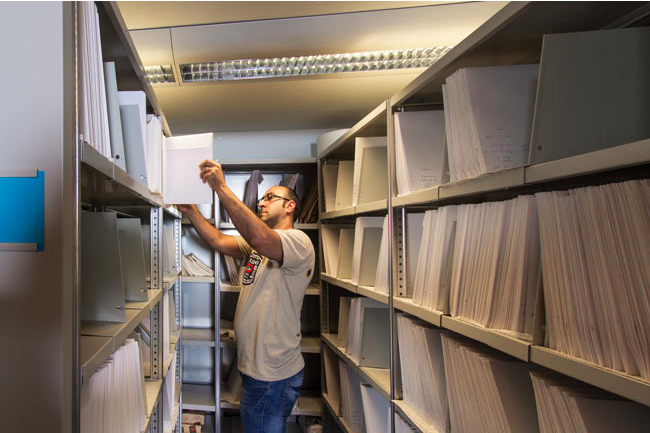
The result was the AMAR Foundation, now located in the village of Qornet el-Hamra, a forty-minute drive from Beirut, and under the leadership of such leading Arabic music researchers as Mustafa Said and Frédéric Lagrange. The group decided that one of the best ways to make the material accessible was to aim for a series of remastered recordings that AMAR would publish together with thoroughly researched write-ups, centring each one on an understudied aspect of the phonograph era. AMAR teamed up with Saqi Books to publish the first of these in 2011. The box set, titled The Voice of the Nahda Era, focused on the all-but-forgotten pre-WWI musical celebrity Yusuf al-Manyalawi (1847-1911), and included a full length Arabic-language monograph on the life and work of al-Manyalawi, with an abridged translation into English and French, as well as ten CDs of his remastered recorded works. AMAR’s publications have expanded since 2011 to include publications on Sami al-Shawwa (1889-1965), ‘Awalem, and musical pioneers from Greater Syria. In recent years, AMAR’s curation of large public exhibitions in Berlin (2018) and Marseille (2020) have complemented the Foundation’s publications by expanding audience engagement with AMAR’s output.
Another major focus of the Foundation has been to expand its collection through further acquisitions. The Foundation’s headquarters include a substantial library of published books, periodicals and ephemera, and its audio collection has grown to more than 12,000 pre-1940 phonographic recordings, including well over 400 wax cylinders. AMAR’s staff have set out to systematically digitize and catalogue their collection. Approximately 500 digitized musical recordings feature in the 200 episodes of AMAR’s weekly podcast, Rawdet el-Balabel, which ran from March 2013 until funding dried up in April 2017. Though conducted in Arabic, the podcasts (which include extensive commentary and analysis by Said and Lagrange) have been translated to English and made available, along with a great deal more, on the AMAR website and Facebook page and group.
More recently, AMAR has begun work on identifying and video recording aural traditions across the southern and eastern Mediterranean region that are dying out. As part of this effort, AMAR’s recordists and field researchers have documented twelve such aural traditions, including hakawati-style performances of al-Sira al-Hilaliyah, sea shanties and pearling songs in the Perso-Arab Gulf, Yazidi festival celebrations, khashshaba art in southern Iraq, and sha’anbah music and song traditions in southern Algeria.
Though some planning is underway to develop an online platform for the Foundation’s digital library, researchers hoping to consult the collection are best served by coordinating with the Foundation staff for an in-person visit to Qornet el-Hamra where staff will often make digital copies for researchers. AMAR’s catalogue is not public. Public knowledge that a recording was not in the AMAR collection would likely drive the price of that item up tremendously. Though there are some gaps, a researcher who wants to work on phonograph era recordings from the region can assume that AMAR has it.
Researchers looking to access some of this material can get in touch with the AMAR Foundation’s staff directly through the AMAR website.
Nawa: the Palestinian Institute for Cultural Development
Since the 1970s, Nader Jalal has been a key part of efforts to document and develop Palestinian popular arts, particularly through Sharaf, a Palestinian popular arts troupe. Part of what drove him and others working in this field was a desire to push back against the prevailing idea that folkloric and popular arts were the only real musical heritage in Palestine. Convinced that the musical efflorescence associated with Aleppo, Alexandria, Beirut and Cairo in the phonograph era could not simply have skipped Palestinians, Jalal discovered–with the help of music historians such as Abu Khalid al-Batrawi, Issa Boulos, and Elias Sahab–that Palestinians had an important role in the musical renaissance of the early 20th century. In the year that followed the summer of 2000, Jalal and Boulos followed what leads they could find on Rawhi al-Khammash (1923-1998), one of the better known (albeit largely forgotten) Palestinian music pioneers of the century.
As the early 2000s wore on, the duo realised that this work would need to be institutionalised, naming their effort Nawa. In 2009, the team unsuccessfully sought to garner the support of the Palestinian Authority’s Ministry of Culture –where Jalal worked– to carry out in-depth research on the material at hand, after which Jalal dedicated two years to researching the works of al-Khammash. Through his research, Jalal tracked down the students and colleagues of Rawhi al-Khammash, through whom he gathered around 250 of the composer’s notated musical compositions. This became Nawa’s initial collection. Instead of focusing on publishing the material, the Nawa team decided that they would put their energy towards reproducing these songs by making recordings that were meant to be faithful to the original compositions, supplemented with touring live performances. This became the first Huna al-Quds, named for “This is Jerusalem Calling” – the Palestinian Broadcasting Service inaugurated in 1936. This is how Nawa became the only organization focused exclusively on reassembling the archive of Palestinian commercial and art music from the era of the phonograph and early broadcasting.
After 2012, Nawa began actively collecting any materials they could find of relevance to their goal. This resulted in two further volumes of Huna al-Quds, one reproducing a representative selection from the 131 compositions by Mohammad Ghazi (1922-1979), another all-but-forgotten Palestinian singer and songwriter, that the Institute’s researchers could find, and a second featuring instrumental compositions by al-Khammash, Ghazi, Abdel-Karim Qazmouz, and Riad al-Bandak. The fourth volume, forthcoming, will focus specifically on the work of al-Bandak. So far, Nawa has excavated the work of over sixty Palestinian musicians from the phonograph era, many of them female performers such as Wadiʿa, Thurayya Qaddura, Mary Akkawi, Raja’ al-Haifawiyya (also Raja’ al-Falastiniyya), many of whom gained further fame as regulars on the Palestinian broadcasting scene, but who had established themselves as performers on commercial recordings by global and local-independent record labels.
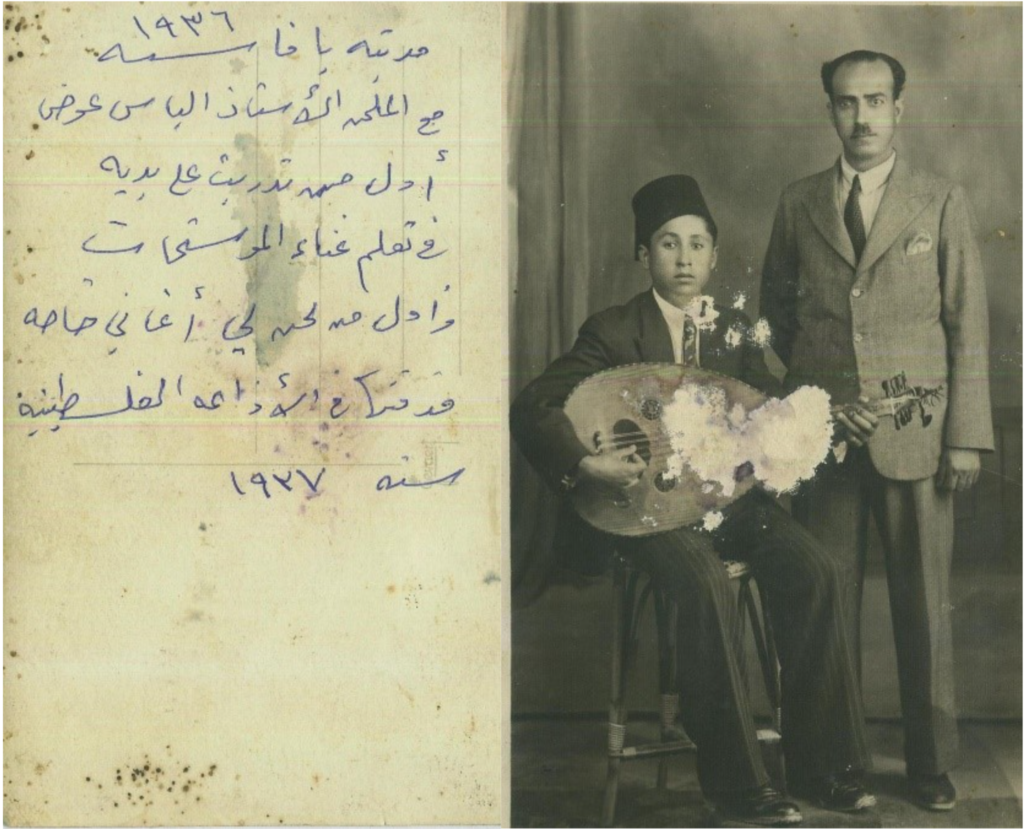
To say that Nawa is under-resourced is an understatement. However, the team has done what it can with what it has. They have rented out a space in Ramallah that turned out to be the home in which Jalal was born in five decades before returning to set up an archive there. The archive itself has a few dozen analogue records and hundreds of digital audio files. The bulk of the collection, however, is the documentary collection of around a million items, including musical notation, posters, pamphlets, photographs, books, newspapers and periodicals, memoirs and autobiographies. Very little of Nawa’s collection is digitized, as much of the emphasis of their work to date has been on acquisition. The team is currently working to fundraise to increase their capacity to catalogue, restore, conserve, and digitally preserve the collection. This has not stopped researchers from making use of the collection.
Anyone interested in music-making in Palestine, especially during the first half of 20th century, will be hard pressed to find a better resource than Nawa, and are encouraged to get in touch with them at Nawa_institute@yahoo.com. Though Nawa does not have a website, you can follow their work through their page on Facebook.
Centre des Musiques Arabes et Méditerranéennes, CAMM
Nestled in Tunis’s Sidi Bou Said quarter, the site of the ancient city of Carthage, sits the Ennedjma Ezzahra palace built by wealthy Franco-German musicologist millionaire Baron Rudolph D’Erlanger (1872-1932) who was a driving force of the 1932 Cairo Congress of Arabic Music. In 1992, D’Erlanger’s palace was chosen to host the Center for Arab and Mediterranean Music (CAMM), an institution mandated to operate the palace as a museum and cultural venue while also carrying out programming to preserve and develop the musical heritage of Tunisia. By the time CAMM was operational in 1994, the Tunisian government decided to expand the Center’s mandate to include Khazinat al-Tasjilat al-Sawtiyyah (the National Sound Archive), to operate as the country’s legal deposit for audio materials and music in particular. Since then, the archive has worked to acquire and digitally preserve an immense and growing collection of audio materials that prioritises Tunisian materials, materials from the Maghreb, and materials from the Arab world more broadly. The collection also includes some international recordings gifted by donors.
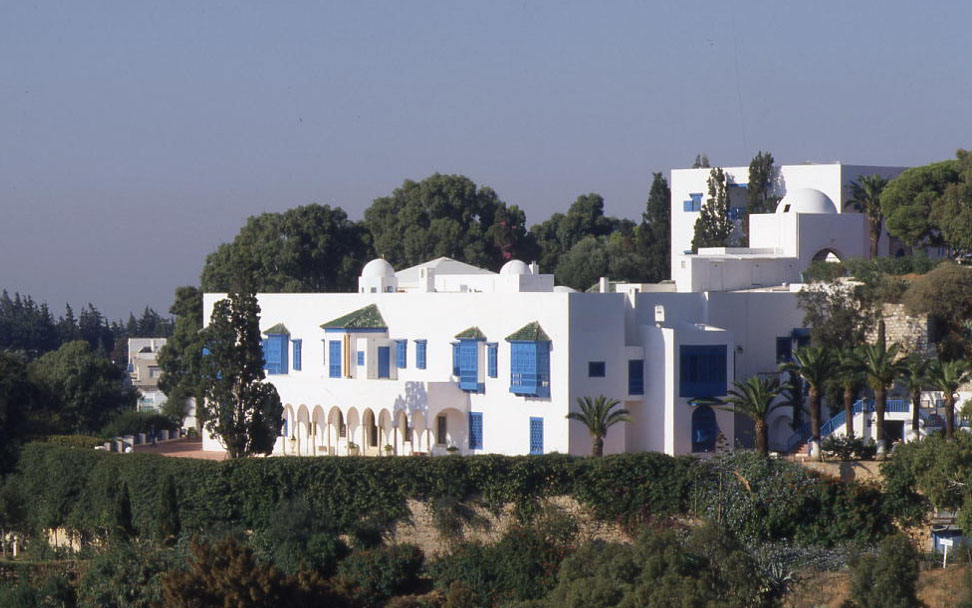
Soon after the archive began operation, its leadership decided that a major part of its work would be not only to actively collect existing recordings, but to send field recordists to the different regions of the country and make original recordings of the country’s musical traditions. To date, CAMM’s field workers have recorded such musical traditions from 20 of Tunisia’s 26 provinces. These account for about six percent of the archive’s total collection.
The bulk of the archive’s collection, however, is the 36,000 audio and audiovisual recordings in most analogue and digital carrier formats. When the archive was set up, it brought together different existing collections from around the country, including the archives of the infamous Carthage Festival (with materials from the 1970s onwards), the Testour Malouf Festival (1970s-1980s), the National Committee for Culture (1960s onwards), and the Rachidiyya Institute of Tunisian Music (est. 1934) which includes important nubas recorded by the French broadcasting service in the mid-1950s. The collection also includes valuable recordings by linguistic anthropologists Leon Azulay (b. 1962) who recorded different speakers at the 1900 Paris World Expo, and Paul Träger(1867-1933), who recorded in Tunisia in 1903. The collection also includes over fifty recordings of Tunisian music by German musicologist Wolfgang Laade (b. 1925) recorded in 1960. Two musical collections held by the Centre stand out in particular. The first was the gift by luminary Tunisian musician Salah al-Mahdi that included over 1,000 flat discs and cassette recordings that cover the period from the 1960s to the 1980s; and the 2020 accession of the Faruq al-Sha’buni collection of over 2,200 78 rpm discs from Tunisia and the region more broadly.
In addition to the monograph and periodical collection held by the Centre, its print, manuscript and ephemera archive contains the personal papers and collections of Rudolph D’Erlanger and other foundational figures of Tunisian and Arabic music such as Manub al-Sanussi, Ali Riyahi and Mohammad Sa’adah. Some of these, such as the Riyahi collection, were assembled in the Centre’s publishing projects: these take the form of both research monographs and remastered editions of the musical works of particular musicians and musical repertoires.
One of CAMM’s great achievements is the cataloguing and digitization of their collections. Highly specialized cataloguing is carried out by specialist musicologists contracted for the task, and with an emphasis on recording the melodic and rhythmic modes (maqams) and instrumentation, reflected in the Centre’s thorough catalogue. Until 2009, the Centre’s digitization was mostly done on an ad hoc basis at the request of researchers. Since then, however, the archive’s team –led by conservation specialist and head of the archive Manoubia Hermi–have designed and implemented a proactive plan to digitize the entire collection, including photographing the carriers themselves as well as any and all documentation accompanying collection items, while also giving priority to any undigitized items requested by researchers. In just over a decade and despite the challenges posed by degradation and obsolescence, the CAMM team has digitized the bulk of its holdings.
Given the complexities of authorial rights, most of the Centre’s digital material is not uploaded onto its online platform. Nor is the archive open to the public. The collection is highly accessible to researchers, however, who—upon sending a description of their research and documentation of their credentials—are provided with a secure login to the archive’s digital library where they can access digitized materials. Similarly, researchers can request digital copies of digitized textual materials without the watermarks imprinted on the publicly accessible copies on the website. The Centre is currently working with Tunisia’s organization for the protection of authors’ rights to examine the possibility of creating a public online platform for their substantial digital audio collections. Such a platform would be the first of its kind in northern Africa.
Researchers interested in consulting this crucial collection can contact the head of the archive, Manoubia Hermi, directly at manoubia.hermi@cmam.tn.
British Library
With over six million recordings, the UK’s national sound archive at the British Library (BL) is one of the largest in the world and includes almost every recording format, as well as some of the world’s earliest wax cylinder recordings. The collection was formally begun by pioneering British sound archivist Patrick Saul (1913-1999) in 1948 and incorporated in the 1950s as the British Institute of Recorded Sound (BIRS). In 1983, the BIRS came under the custodianship of the British Library as the cornerstone of the UK’s National Sound Archive. When the Library opened in London in 1997, the collection was physically moved there, becoming the cornerstone of the Library’s Sound and Vision collection.
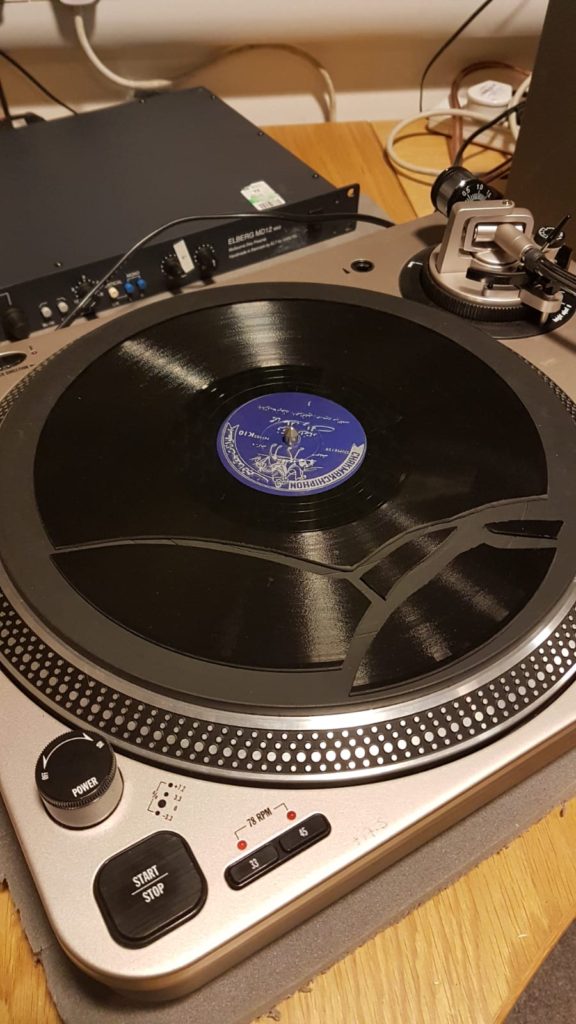
Since the 1970s, recordings from the southern and eastern Mediterranean regions, as well as the Arabo-Persian Gulf, have entered the collection in a few different ways. One of the most important of these has been through gifts and donations by individuals, a recent example being a modest but valuable collection of commercial shellac discs donated by legendary Iraqi record store owner Ezra Hakkak and his friend Emile Cohen. In many cases, individuals or institutions have given substantial collections of unpublished, one-of-a-kind materials. One such example is British researcher Thomas Muir Johnstone who recorded many of the dialects of the Arabian Peninsula and whose collection is an invaluable resource for the study of the dialects of the Arabic language. Another such example is that of the Moroccan Memories in Britain collection, which includes over 100 interviews with 3 generations of Moroccan migrants to the UK speaking about their experiences. Such collections have their own collection number (e.g T.M. Johnstone: C733; Moroccan Memories: C1237), and together with the other unpublished C-numbered collections, are a main focus of the massive Unlocking our Sound Heritage project to digitize one-of-a-kind at-risk audio recordings across the UK. As a result of this project, those materials in these unpublished collections that had not previously been digitally transferred are now being digitized and will be made available through the project portal currently under development. Such collections are often accompanied by the documentation put together by the individual or body who led in assembling them, and which researchers are advised to request if working with these collections.
Another body of the BL’s recorded sound collection of relevance to the southern and eastern Mediterranean and the Arabo-Persian Gulf regions are commercial recordings that were collected and purchased directly by the Library and its staff. As a national library with a mandate to collect as widely as possible, which the predecessor collection of the BIRS also committed to, the BL’s day-to-day acquisitions have consistently included materials from, or of relevance to, the region, and its audio curators have picked up audio materials in various formats that they deemed good fits for the overall collection.
The collection that has made the BL’s holdings of commercially recorded music from the southern and eastern Mediterranean and Arabo-Persian Gulf regions one of the most extensive in the world is the 2009 gift of the BBC Arabic Network’s library. This collection of several thousand recordings was amassed by the BBC World Service since its establishment in 1938, mostly through purchase on the market. It includes audio materials from most of the record labels operating between Morocco and Iraq. Though yet uncatalogued, this collection also includes sound recordings made in the BBC Arabic’s studios for later broadcast. Once these materials are digitized and catalogued, they will undoubtedly be an immensely valuable resource for researchers.
The British Library’s Sound and Moving Images archive can be searched through their catalogue. You can reach the BL curators of the World and Traditional Music section at worldandtradmusic@bl.uk.
UC Santa Barbara Library
The University of California at Santa Barbara (UCSB) Library has been collecting 78 rpm and wax cylinders since the early 1970s. Since 2005, they have been the driving force behind one of the most impressive music catalogues in the world, the Discography of American Historical Recordings (DAHR), which began as an attempt to document and catalogue the recordings by Victor Talking Machine Company, and has since expanded to other US labels, like Columbia and Zonophone. US labels like Victor and Columbia recorded music in the southern and eastern Mediterranean regions during the phonograph era, but, and perhaps more importantly for some researchers, were among the main companies that commercially recorded the music of migrants to the US from the south and east Mediterranean, such as Syrian- and Armenian-Americans who have been receiving more attention from researchers in recent years. A great resource from which I’ve learned a great deal on this is Richard Breaux’s Midwest Mahjar, you can also hear an interview with Breaux on the Ottoman History Podcast.
Two collections in particular stand out in terms of their relevance to historical audio recordings from the region. The first of these to join their collection was that of Kutay Derin Kuğay who moved to the US from Turkey in 1966. Kuğay was a filmmaker, composer and radio show host who amassed a substantial collection of Turkish and Greek audio materials, mostly recorded by the major recording companies such as Gramophone and Odeon. The library obtained the collection upon Kuğay’s return to Turkey in 2015. Catalogued by ethnomusicologist Eric Ederer, this collection is impressively catalogued, down to the genre, instrument, and melodic and rhythmic mode where this has been identifiable.
Ederer also worked on the second major collection of relevance. This is the collection amassed by Benno Häupl, a legendary collector who lived in Riga, Latvia and whose collection UCSB purchased at auction in the mid 2010s. Häupl was very active in collecting recordings from all over the world, but had a particular interest in Cajun, bagpipes and free reed music, as well the musics of the southern and eastern Mediterranean regions. This collection is currently being catalogued and digitized to UCSB’s high standards, the Arabic recordings being worked on by Anthony Greco. Häupl’s collection also included a massive assemblage of postcards and photographs in different formats of music performers from around the world, and can be searched through the finding aid available on the Online Archive of California.
Fortunately for those interested in how record sleeves can be used to supplement research on the history of recorded sound, Häupl was particularly interested in keeping and acquiring record sleeves for his collection. Many collections institutions discarded these for years, but UCSB has kept them. Häupl also collected thousands of record label catalogues, many of which include recordings from the southern and eastern Mediterranean regions, and some of which have featured in the booklet accompanying John Ward’s recent Excavated Shellac release.
Though the principal digital portal for UCSB’s collection is their own catalogue, which offers direct access to the Kuğay and Häupl collections, researchers are also advised to also delve into the Discography of American Historical Recordings (DAHR) site. Though centred on musical production in the USA, there is much in the DAHR database of relevance to the regions south and east of the Mediterranean due to the large waves of (musical) migration from these regions to the Americas. The DAHR platform allows researchers to directly access digital files—helped by an agreement with Sony Entertainment to make early 20th century recordings to which they hold the rights available in this way—and filter their searches in almost every way imaginable. For UCSB materials for which the digital file is unavailable online, researchers can actually request a digital copy be sent to them directly as an mp3 file (and if you have a good reason, they’re even willing to send over WAV files). For this reason, as well as the fact that materials will not show up on any catalogues until they have been fully catalogued, it is a very good idea, once again, to reach out to the UCSB archivists and let them know what you are working on to see how to make the best use of their collection.
You can reach the caretakers of these wonderful collections by contacting special@library.ucsb.edu.
Special thanks to Dr. Eric Ederer, Dr. Anthony Greco, Manoubia Hermi, Nader Jalal, Kamal Kassar, David Seubert, and Dr. Janet Topp Fargion for taking the time to talk about their institutions’ collections and their work with them.
* I have chosen the term southern and eastern Mediterranean for this article in order to be inclusive of the various languages and musical traditions relevant for this article. Broadly speaking, these are the lands of the Ottoman Empire at the turn of the twentieth century (including the Arabo-Persian Gulf) and northern Africa.
Hazem Jamjoum is doctoral candidate at NYU studying the history of music commodification in and around Egypt in the early 20th century. He is the curator and cataloguer of the British Library’s collection of shellac recordings from Southwest Asia and North Africa.
